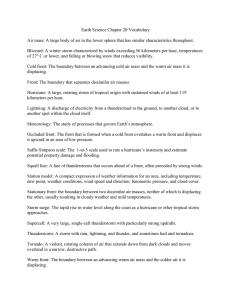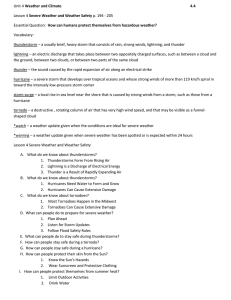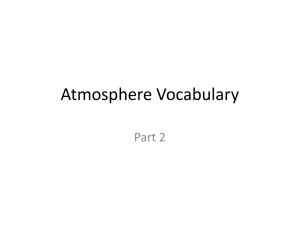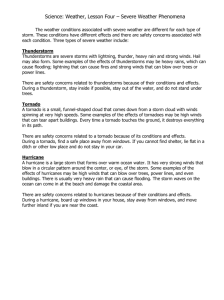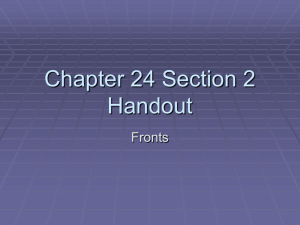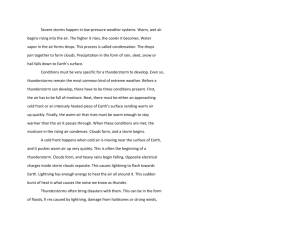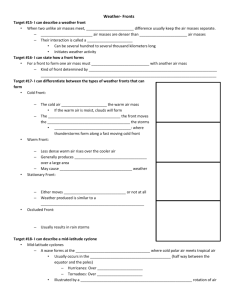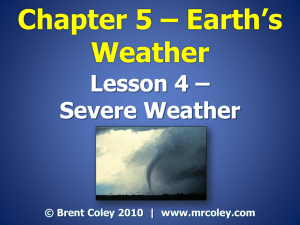Outline #4
advertisement
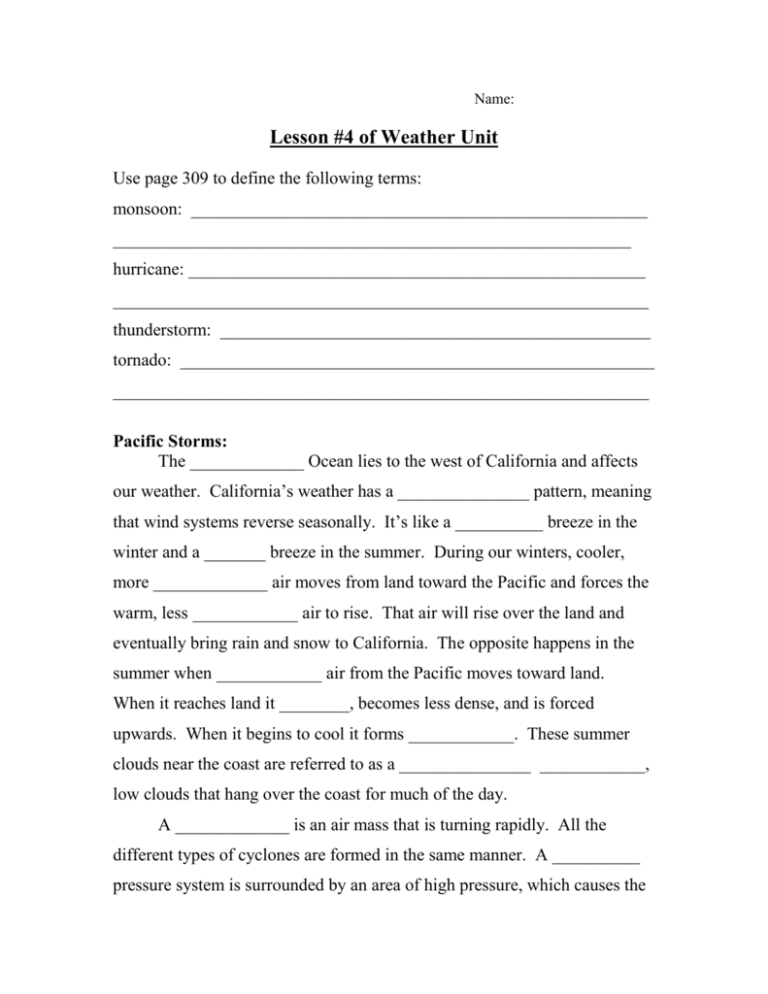
Name: Lesson #4 of Weather Unit Use page 309 to define the following terms: monsoon: ____________________________________________________ ___________________________________________________________ hurricane: ____________________________________________________ _____________________________________________________________ thunderstorm: _________________________________________________ tornado: ______________________________________________________ _____________________________________________________________ Pacific Storms: The _____________ Ocean lies to the west of California and affects our weather. California’s weather has a _______________ pattern, meaning that wind systems reverse seasonally. It’s like a __________ breeze in the winter and a _______ breeze in the summer. During our winters, cooler, more _____________ air moves from land toward the Pacific and forces the warm, less ____________ air to rise. That air will rise over the land and eventually bring rain and snow to California. The opposite happens in the summer when ____________ air from the Pacific moves toward land. When it reaches land it ________, becomes less dense, and is forced upwards. When it begins to cool it forms ____________. These summer clouds near the coast are referred to as a _______________ ____________, low clouds that hang over the coast for much of the day. A _____________ is an air mass that is turning rapidly. All the different types of cyclones are formed in the same manner. A __________ pressure system is surrounded by an area of high pressure, which causes the low pressure system to rise. This forms a _____________ current and because the Earth _________________ it causes the air to move in a curved path. Hurricanes and Other Cyclones: Hurricanes can start as a _____________ over a warm ocean. It is first called a tropical depression, because the air pressure is _________. If winds of the depression reach over 39 miles/hour, then it is called a tropical _______________. It is labeled a hurricane once it reaches speeds of ____ miles per hour. Read the rest of this section, look at the awesome picture on “Anatomy of a Hurricane”, read its captions, and then draw your own picture of a hurricane and label these parts: eye, eye wall, fastest winds, warm ocean waters, storm surge, and anything else you feel necessary. Use arrows to show the movement of air in all directions. What are hurricanes called in the western hemisphere? ________________ Thunderstorms and Tornadoes: A thunderstorm is a storm with _____, _________, ______________, and thunder. This type of storm forms when __________, ___________ air is forced upward rapidly. This can be due to a dense, _________ front pushing underneath it. The rising warm air cools, ______________, and forms clouds. Rain falls and pulls cold air downward with it causing winds to blow both upward and downward within the cloud. ________________ charges build up in a cloud and travel through the air as lightning. The air along the bolt is so hot that it makes air expand rapidly causing sound waves we hear as _______________. Strong thunderstorms can be the sign of another violent type of storm called a _______________. Swirling winds in a cloud spin so fast they develop an area of extremely ________ pressure and the funnel begins to descend from the cloud toward the ground. It acts like a vacuum pulling air from close to the ground into the area of low pressure and up into the cloud above. These storms are difficult to ______________, however warnings are issued to get people out of harms way. What causes most thunderstorms to stop? ___________________________ _____________________________________________________________ _____________________________________________________________
